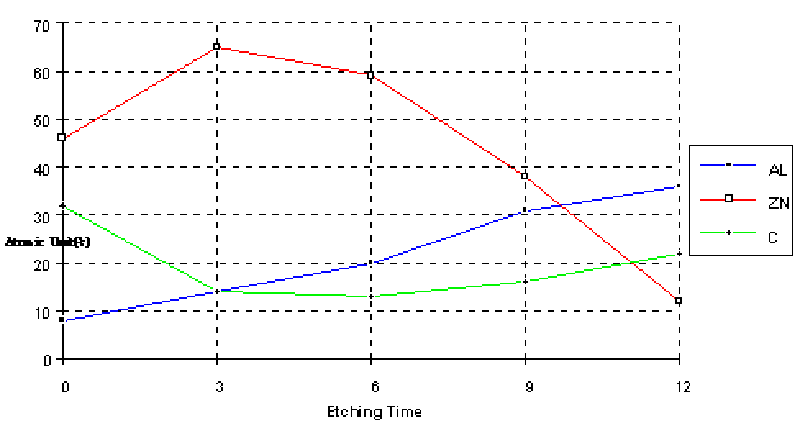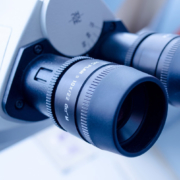FILMET has a continuing association with the University of L’Aquila.
The here-following AES depth profile shows the components in atomic percentage at the different depth reached through ion-sputtering erosion. Measure of samples’ composition is made using an Auger Emission Spectrometer, measured every 3 minutes. Thickness range is measured by erosion time. Thickness is therefore expressed in time units.
Also included are some profile tests made on metallized film. These tests enable us to understand which is the inner composition of the metallized layer starting from the surface down to the substrate.
As the Auger graphs line show (Fig. 1, 2):
- Zinc is present in all the sample in not oxidised form and its presence gradually decreases near the substrate.
- Aluminium is partially oxidised around 10-15% of its particular presence to a form very near to conductive AlO. Aluminium presence is constant along the sample and increase a little near the substrate.
The analysis confirms that the main function of the aluminium component, due to its constant presence in all the layer, is to increase the adhesion of the metal to the substrate and to prevent zinc oxidation.
Zinc, due to its relevant presence (over 90% in weight), ensures the compound’s top electrical performance.




